Personal Financial Wellbeing
By Diana Ash, Benefits, Leave, and Workers Compensation Manager
As the summer quickly comes to a close, many of us have a variety of financial issues on our minds, including:
- School starts soon. How much are school supplies going to cost this year? Why does the list of supplies continue to grow given our dependence on tech? How does a backpack cost THAT much? Why did I let my high schooler become a sneaker head?
- Student loan payments restart in September. What can be adjusted in the monthly budget to minimize the hit of that payment? What are my options if I just can’t afford that payment? Why did I get that degree, anyways?
- The family really wants to take a vacation this summer and we all deserve it. But what can we afford? Gas prices continue to creep up. Air travel just seems like a nightmare regardless of where you fly or when. The average trip to Disneyland for a family of 4 is $1000 PER DAY, without travel costs.
HOW DO WE MAKE ALL THIS WORK?
First, breathe. Don’t focus on ALL of the issues. One issue, action, step at a time.
Financial wellness, like other components of wellbeing, is about identifying the issues that need your attention, knowing what resources are available to help resolve or manage those issues and doing what works best for you and/or your family.
SCHOOL SUPPLIES
The increasing cost of school supplies is unavoidable. Here are a few strategies to help manage the costs:
- Start at secondhand and dollar stores. Look for reusable items like pencil cases, rulers, or clothing at secondhand stores. Retro is in, again. Consignment stores are also a great option for used clothing at more reasonable prices. Purchase the basic items at dollar stores, especially those items intended for classroom distribution; tissue, glue sticks, rulers, pencils, plastic storage bags, antibacterial wipes, and crayons do not have to be brand name. And, stock up. Create a school supply pantry in your home that is the go-to spot when anyone needs supplies.
- Budget with limited upgrades. Give the kiddos a budget for the essentials and allow limited upgrades. For example: maybe they want a new pair of Nikes and a new backpack. With a budget to start, they know how much they can spend and can decide whether to spend the limited funds on the Nikes and use last year’s backpack or stick with their current kicks and buy that new backpack.
- Buy items in neutral colors and reuse them. Neutral colors, without branding or characters, can be reused from year to year, or passed to the next child. Pair last year’s basic, neutral pieces with trendy new pieces to get the current look kids “must have” today. And take advantage of store programs, like Target’s Cat & Jack return policy, that recognize how very quickly kiddos outgrow everything.
- Shop without kiddos. Just as you shouldn’t go grocery shop when you are hungry, leave the kiddos at home when you shop for school supplies to manage the overall cost of the trip. A kid-free focused trip with a list, and without the impulse buys initiated by the kiddos, will directly impact the amount you spend. And help with your blood pressure.
If your family includes older kids, strategies for moving into the dorm aren’t that different. Those young adults will think they need all the things and all the brands, but since you hold the purse strings, you can give them a budget and still shop for shower slippers and a caddy at the dollar store. Just don’t skimp on the two-ply toilet paper. 😉
And, if your kiddos are somewhere in between pencil cases and dorm supplies, consider a 529 plan (college savings). Rules have been updated (for example, technology is a qualified education expense and the beneficiary can be changed if the first born decides to form a band instead of attend college) and plans can vary by state, but the potential tax-free investment growth is worth researching.
STUDENT LOAN PAYMENTS
The COVID emergency relief pause on student loan payments ends in September. To get ready for your loan payments to start again:
- Update your contact information with your loan servicer. Although losing touch with your loan servicer is a strategy of many borrowers, it is not a good strategy. They will find you (or your family members who will rat you out). You don’t want to miss important information because they can’t find you.
- Confirm what your next payment is and when it is due. Start looking at your budget now in preparation.
- Evaluate your options and make sure you are on the best repayment plan for you. There are many repayment plan options available, including: standard, graduated, extended, revised pay as you earn (REPAYE), pay as you earn (PAYE), income-based (IBR), income-contingent (ICR), and income-sensitive repayment plans. Contact your loan servicer to determine what you are eligible for and what works best for your current financial situation. Some of these options can be changed as your situation changes.
The US Department of Education has a Loan Simulator (Loan Simulator | Federal Student Aid) to help calculate loan payments and choose the best repayment option to meet your goals and needs.
- Take action NOW if you want to lower your monthly payment. Is consolidation an option? Be sure to consider the pros and cons of consolidation.
- If you just can’t make the payments, contact your loan servicer about short-term relief. Deferment or forbearance are still available in the post-COVID world. There is nothing wrong with requesting a deferment until you are in a better financial situation. There is value in your peace of mind.
Be sure you know what happens if you don’t repay your loan. A delinquent loan (3 months of no payment) will be reported to the three major credit bureaus. A defaulted loan (9 months of no payment) WILL damage your credit score and impact your future. And, the government can take your tax refund, part of your social security benefits, and garnish your paycheck.
FAMILY (OR SOLO) VACATION
We all need a break sometimes. There are lots of alternatives to the big family (or solo) vacation (and the associated cost), especially when vacationing with family tends to be work for the parents:
- One Day at a Time. Instead of one big vacation, take one PTO day each week through August and September. Spend those days doing something fun with your family. Let the kiddos pick some of the adventures.
A few suggested adventures: check into a local hotel for a day (pick one with a pool), spend the day volunteering, do a home improvement project (let the kiddo’s paint their room), have a movie marathon in the backyard (the cost of projectors just keeps going down) with unlimited snacks, do a mid-week road trip to a local tourist spot (no crowds on Wednesday) and take a picnic lunch, or build a chicken coop together (working with your hands is great for mindfulness).
The memories from MANY single-day summer adventures will be more valuable than that one amusement park trip where your luggage ended up in Chicago but you were in Texas and the kiddos got food poisoning.
Single adults can enjoy this same strategy.
- Camping/Glamping. Enjoying the great outdoors can be fancy or primitive or something in the middle, based on your budget. Buy a tent, rent an RV, reserve a cabin on Airbnb, stay in a yurt at a state park– the options are limitless. Preparing your own food and taking the dog with you will be significantly cheaper than eating out and hiring a dog sitter. Being off the grid, as much or as little as desired, will allow everyone to recharge.
- Local Events. Plan time in your own community as though you were a visitor. Venture off your normal beaten path. Try the new food cart pod that your read about on Instagram, visit the zoo, check out the summer concert series at the local park (or a park in the neighboring town), do a 5K (or volunteer at the water station for the 5K), rent a kayak (the view is different when you are on the water), buy your produce at the local farmers market (and talk to the farmer that grew your favorite peaches), attend the renaissance faire (and wear a costume). Get outside of your comfort zone. Explore the hidden local gems that we are often too busy to enjoy.
- Family & Friends. Visiting with family or friends can be significantly less expensive if they have space for you (and aren’t too far away). Consider shorter trips to avoid overstaying your welcome. It is work for them to keep you, and the kiddos, entertained and fed. Consider an Airbnb (they have houseboats in some communities), camping, or a hotel in the area, so you can have your own space and schedule.
Summer will be over before long. Practice a moment of mindfulness, enjoy and appreciate your current place in the world. Tomorrow is a new day and new issues will need your attention.
If you can incorporate just one of these suggestions and feel better about today’s financial concerns, that is cause for celebration.
Additional financial wellness resources are available from our employee assistance program (Infinity Rehab – Uprise Health Member Portal) (access code is infinityrehab).







